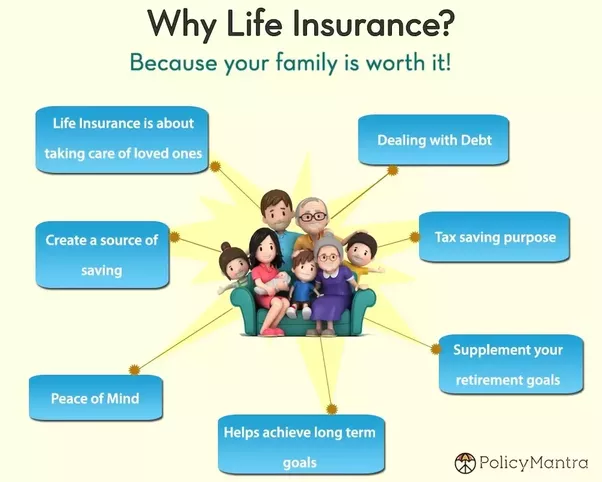How Pacific Prime can Save You Time, Stress, and Money.
Wiki Article
Pacific Prime Things To Know Before You Buy
Table of ContentsGetting My Pacific Prime To WorkPacific Prime Things To Know Before You BuyPacific Prime for BeginnersSome Known Details About Pacific Prime Pacific Prime Fundamentals Explained

This is because the data were collected for a duration of strong financial performance. Of the approximated 42 million individuals that were without insurance, almost concerning 420,000 (about 1 percent) were under 65 years old, the age at which most Americans become qualified for Medicare; 32 million were grownups between ages 18 and 65, around 19 percent of all adults in this age; and 10 million were kids under 18 years old, regarding 13.9 percent of all youngsters (Mills, 2000).
These quotes of the variety of individuals without insurance are created from the annual March Supplement to the Current Populace Survey (CPS), carried out by the Demographics Bureau. Unless or else noted, national estimates of individuals without wellness insurance coverage and percentages of the populace with various type of protection are based on the CPS, the most extensively made use of resource of price quotes of insurance policy protection and uninsurance rates.
What Does Pacific Prime Mean?

Still, the CPS is especially helpful since it produces yearly price quotes reasonably swiftly, reporting the previous year's insurance coverage estimates each September, and due to the fact that it is the basis for a consistent collection of quotes for even more than 20 years, permitting analysis of fads in protection over time. For these reasons, in addition to the comprehensive usage of the CPS in various other studies of insurance coverage that are provided in this record, we count on CPS quotes, with restrictions kept in mind.

The quote of the number of uninsured individuals broadens when a population's insurance policy status is tracked for several years. Over a three-year period beginning early in 1993, 72 million people, 29 percent of the united state population, were without protection for a minimum of one month. Within a solitary year (1994 ), 53 million individuals experienced a minimum of a month without protection (Bennefield, 1998a)
Six out of every 10 uninsured grownups are themselves utilized. Although functioning does improve the likelihood that one and one's family participants will certainly have insurance policy, it is not a guarantee. Even members of family members with two full-time wage earners have nearly a one-in-ten possibility of being uninsured (9.1 percent without insurance rate) (Hoffman and Pohl, 2000).
How Pacific Prime can Save You Time, Stress, and Money.
New immigrants account for a significant percentage of people without medical insurance. One evaluation has actually associated a significant portion of the recent development in the size of the U.S. without insurance population to immigrants that arrived in the nation between 1994 and 1998 (Camarota and Edwards, 2000). Current immigrants (those who came to the USA within the previous 4 years) do have a high rate of being without insurance (46 percent), however they and their youngsters account for simply 6 percent of those without insurance policy nationally (Holahan et al., 2001).The connection in between medical insurance and accessibility to care is well established, as recorded later on in this phase. The relationship in between health and wellness insurance coverage and health outcomes is neither direct nor simple, a comprehensive professional and health services study literary works links wellness insurance protection to better access to care, far better top quality, and enhanced individual and population health status.
Degrees of analysis for checking out the effects of uninsurance. This discussion of medical insurance protection focuses primarily on the united state population under age 65 since virtually all Americans 65 and older have Medicare or various other public protection. In addition, it concentrates especially on those without any medical insurance for any length of time.
The 7-Second Trick For Pacific Prime
The issues encountered by the underinsured are in some aspects comparable to those encountered by the without insurance, although they are typically much less extreme. Health and wellness insurance coverage, however, is neither required neither adequate to gain accessibility to medical solutions. The independent and straight result of health insurance policy coverage on access to YOURURL.com health services is well developed.
Others will obtain the wellness care they require also without medical insurance, by paying for it out of pocket or seeking it from service providers who offer treatment totally free or at very subsidized rates. For still others, health insurance coverage alone does not guarantee receipt of care since of various other nonfinancial barriers, such as a lack of healthcare companies in their area, restricted accessibility to transport, illiteracy, or etymological and social differences.
Pacific Prime Can Be Fun For Everyone
Official research study regarding without insurance populations in the United States dates to the late 1920s and early 1930s when the Committee on the Expense of Treatment produced a series of reports about funding doctor workplace visits and hospitalizations. This problem became prominent as the numbers of medically indigent climbed up throughout the Great Depression.Report this wiki page